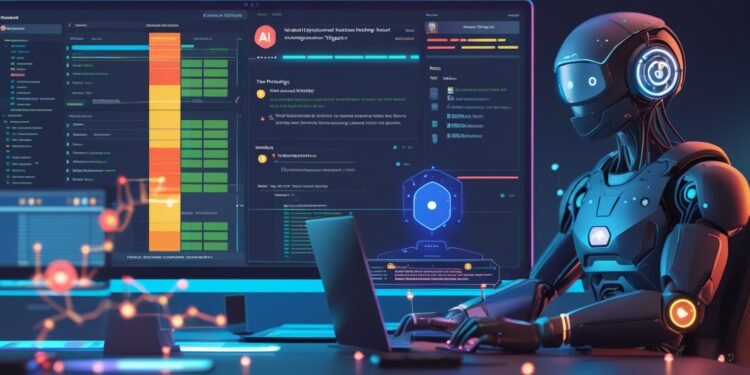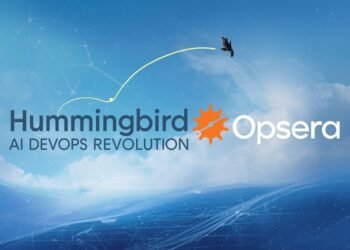Continuous Integration and Continuous Deployment (CI/CD) has become the backbone of modern software delivery. But while automation unlocked speed, today’s demands are different.
It’s not just about moving fast anymore—it’s about moving smart.
Developers need insights, not just automation. Security needs to be proactive, not bolted on. Ops teams need to prevent issues, not just respond to them. This is why AI-powered CI/CD is emerging as the next major frontier.
With artificial intelligence infused into every phase—from code commits to rollbacks—pipelines are evolving from rigid automation scripts into intelligent, adaptive systems that think, optimize, and protect.
Let’s unpack how AI is redefining CI/CD in 2025, what’s driving the shift, and how your team can tap into it right now.
1. Shift Left with Real-Time Intelligence
“Shift left” is more than a buzzword—it’s about moving validation, testing, and risk detection earlier in the lifecycle.
AI makes that shift radically more effective.
Where traditional CI tools treat every build equally, AI-powered platforms analyze patterns across builds, commits, and tests to optimize every run.
✅ What this enables:
-
Selective test execution based on diff analysis and risk scoring
-
Predictive failure detection before code is merged
-
Real-time alerts about dependencies known to cause issues
-
Identification of flaky tests based on historical outcomes
-
Smart caching to avoid redundant tasks
This leads to faster pipelines with smarter prioritization, cutting wasted time while maintaining high confidence in every change.
2. Pipeline Security Becomes Proactive
The attack surface for modern apps keeps growing—with dependencies, microservices, containers, APIs, and IaC all under threat. Traditional pipeline security relies on fixed rules and predefined policies, which can’t keep pace with today’s threats.
With AI, security shifts from reactive scanning to proactive, predictive protection:
🔒 Key capabilities include:
-
Detecting secrets in code or CI logs with semantic models
-
Scoring vulnerabilities based on exploitability, not just CVSS
-
Auto-patching common misconfigurations in IaC or Kubernetes
-
Surfacing privilege escalation risks in CI/CD service accounts
-
Enforcing policy-as-code using dynamic, context-aware rules
AI also helps identify compliance drift in regulated environments like healthcare and finance, giving audit-ready evidence and continuous monitoring.
Tools like GitGuardian, Snyk AI, and Oxeye are already delivering these features in real-world pipelines.
3. Conversational CI/CD with LLM Agents
One of the most revolutionary impacts of AI in DevOps is the rise of LLM-powered DevOps agents.
Instead of digging through YAML files, build logs, or pipeline dashboards, developers can now converse with the pipeline.
💬 Use cases:
-
“Why did this build fail?” → AI summarizes the root cause
-
“Show me what changed in pipeline performance last week”
-
“What’s the most common reason deploys fail for Service X?”
-
“Can I safely roll back this deployment?”
-
“Generate a secure deployment template for Python microservice”
Platforms like Amazon Q Developer, Harness AI, and GitHub Copilot for CI/CD are leading this wave—turning logs into insights and YAML into natural language conversations.
4. Intelligent Incident Prevention and Response
Every DevOps engineer has felt the dread of a late-night alert or a failed production deploy. With AI, we can flip the script.
AI can predict deployment failures based on:
-
Commit metadata (e.g., large changes, risky developers, past failures)
-
Service health indicators before and after release
-
External signals like infrastructure changes or traffic spikes
And when failures occur, AI models can:
-
Suggest the most probable root cause
-
Recommend or trigger a rollback
-
Map out the downstream blast radius across services
-
Auto-open tickets with pre-filled diagnostics
In complex microservice ecosystems, this is invaluable. AI gives you predictive stability and faster recovery, even in chaos.
5. Continuous Optimization of Pipeline Performance
CI/CD drift is real. Over time, pipelines get bloated, tests get duplicated, and steps slow down without anyone noticing.
AI can act as a continuous optimization engine, learning over time how your pipeline behaves and where friction builds up.
⚙️ What AI optimization delivers:
-
Eliminates unused or redundant pipeline steps
-
Identifies flaky plugins or slow scripts
-
Analyzes queue wait times and parallelism bottlenecks
-
Adjusts resource allocation based on pipeline load and priority
-
Recommends test suite reordering based on risk analysis
This turns DevOps from maintenance overhead into self-improving infrastructure.
6. End-to-End Visibility for Engineering Leaders
Beyond individual engineers, AI brings huge benefits to engineering managers and platform teams.
With AI summarization, anomaly detection, and visual trend mapping, leadership can answer:
-
“Which teams are releasing slower this quarter—and why?”
-
“Where are the most common security policy violations?”
-
“Which services have the most unstable pipelines?”
-
“What’s the MTTR trend over the last 90 days?”
This empowers data-driven conversations about DevOps health, ownership, and platform maturity—without reading endless Grafana dashboards or log files.
Getting Started with AI-Powered CI/CD
You don’t need to overhaul your entire stack overnight. Start with targeted wins:
🚀 Phase 1: Augment What You Already Have
-
Add an AI layer to your current testing tools
-
Use vulnerability prioritization with AI threat models
-
Try LLM-based explanations for build logs and test failures
🔐 Phase 2: Secure Smarter
-
Adopt AI tools to scan secrets, IaC configs, and runtime behavior
-
Monitor policy drift in real-time with alerting and recommendations
⚡ Phase 3: Optimize and Evolve
-
Profile pipeline performance over time
-
Auto-tune test orders and caching strategies
-
Gradually introduce AI agents for common DevOps queries
Start small. Measure impact. Then scale.
Final Thoughts: Smarter Pipelines Are Just the Beginning
DevOps was born to break silos and speed up delivery. But 2025 demands more than speed. It demands clarity, resilience, and intelligence.
With AI-powered CI/CD:
-
Developers get guidance, not just logs
-
Security shifts from audit bottlenecks to continuous guardrails
-
Pipelines become adaptive, not static
-
Teams move from reactive to predictive
This isn’t just the future—it’s happening now.
The next generation of software won’t just deploy faster.
It’ll deploy smarter.


















